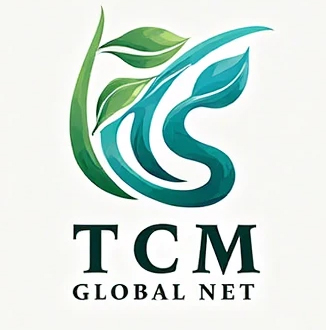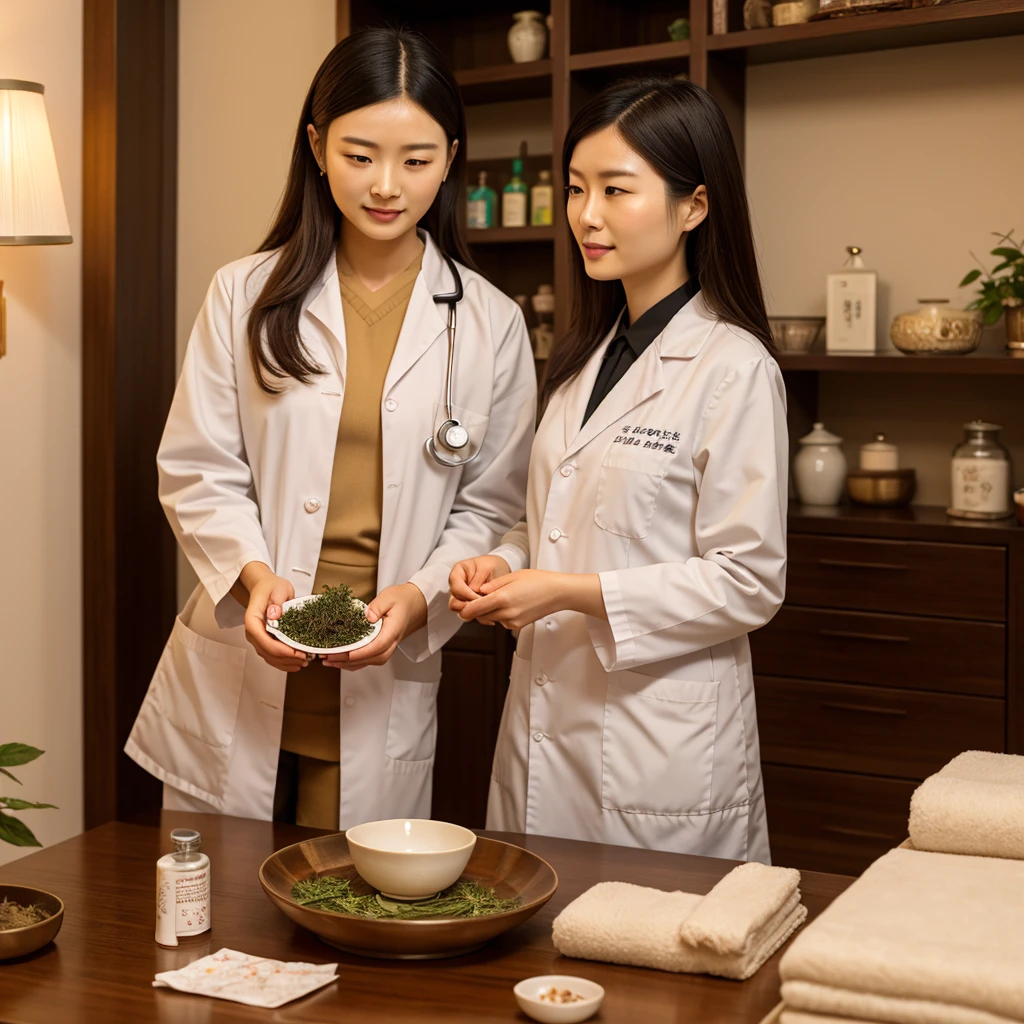According to the “Huangdi Neijing,” it states: “A woman at the age of 14 begins to menstruate, the Ren meridian opens, the Chong meridian becomes abundant, and menstruation occurs on time, thus she can bear children.” This means that women around the age of 14 experience their first menstruation, marking the maturity of the reproductive system. In modern society, many women’s menstrual cycles are showing a trend of occurring earlier. Some girls start developing breasts and experiencing their first menstruation at ages 11-12, or even 9-10. This early onset of menstruation can not only cause psychological stress but may also have adverse effects on physical health. For example, early sexual development may lead to premature closure of the growth plates, affecting height growth.
Menstruation is a barometer of women’s health, and the amount of menstrual flow directly reflects the health status of a woman’s body. However, many women feel confused and anxious when facing the issue of low menstrual flow. This article will explore the definition, causes, management methods, and daily health prevention measures of low menstrual flow from the perspective of integrated Chinese and Western medicine, and use real-life cases to help everyone better understand and cope with this common issue.
I. Dual Interpretation of Low Menstrual Flow in Chinese and Western Medicine
1. Medical Definition and Risks
- Normal Standards: Modern medicine considers a menstrual flow greater than 20ml as normal, and less than 20ml as low menstrual flow. Generally, it can be judged based on the number of sanitary pads used. For an average woman of medium build, a menstrual flow of 20ml is roughly equivalent to 4-5 sanitary pads, and a relatively normal menstrual flow should reach about 30ml, which is about 5-7 sanitary pads. A menstrual flow of 20-60ml (about 4-7 sanitary pads) per cycle, <20ml is considered abnormal (9th edition of “Obstetrics and Gynecology”).
- Long-term Risks: Decreased endometrial receptivity → increased risk of infertility; deficiency of qi and blood → premature aging, decreased immunity.
2. Core Causes in Western Medicine
| Type | Typical Manifestations | Diagnostic Indicators | Treatment Methods |
|---|---|---|---|
| Endocrine Disorders | Polycystic Ovary Syndrome (PCOS), Hypothyroidism | Increased androgens, elevated TSH, ultrasound monitoring of follicles | Diane-35, Levothyroxine + Ovulation Induction Drugs |
| Uterine Organic Lesions | Intrauterine Adhesions (Asherman’s Syndrome) | Hysteroscopy, Endometrial Biopsy | Hysteroscopic Surgery + Sequential Estrogen Therapy |
| Ovarian Function Decline | FSH>40IU/L, AMH<1.1ng/ml | Six Sex Hormones, Anti-Müllerian Hormone | Hormone Replacement Therapy (HRT) |
3. Chinese Medicine Differential Diagnosis
- Kidney Qi Deficiency Type: Early menarche (<12 years), pale menstrual blood, soreness in the lower back and knees → Yougui Pill with modifications.
- Liver Qi Stagnation and Blood Stasis Type: Breast tenderness before menstruation, dark purple menstrual blood with clots → Xiaoyao Powder combined with Taohong Siwu Decoction.
- Spleen Deficiency with Phlegm-Dampness Type: Obesity, excessive vaginal discharge, thick and greasy tongue coating → Cangfu Daotan Pill + Shenling Baizhu Powder.
4. Causes of Low Menstrual Flow
1) Endocrine Disorders
- Polycystic Ovary Syndrome (PCOS): PCOS is one of the main causes of low menstrual flow. Its typical symptoms include reduced menstrual flow, prolonged menstrual cycles, or even amenorrhea. Additionally, PCOS patients may experience elevated androgen levels, leading to hirsutism, acne, and other symptoms.
- Thyroid Dysfunction: Both hyperthyroidism and hypothyroidism can affect hormone secretion, thereby impacting menstrual flow.
- Hyperprolactinemia: Elevated prolactin levels can inhibit ovulation, leading to reduced menstrual flow.
Common conditions such as polycystic ovary syndrome, thyroid dysfunction, and hyperprolactinemia can lead to hormone secretion issues, affecting endometrial growth. Normally, the endometrium should reach a thickness of about 1 cm before menstruation. If the endometrium is not thick enough, or if it is thick but does not shed, it can result in low menstrual flow or irregular menstruation.
Hormone secretion issues can affect the growth of the endometrium, preventing it from developing properly. Many people have undergone ultrasounds, often focusing on the condition of the endometrium. The thickness of the endometrium determines the amount of menstrual flow and whether menstruation can occur normally. Before menstruation, the endometrium should reach a thickness of about 1 cm. When it reaches this thickness, it is like a sponge full of water; the more water it holds, the more it can squeeze out, and here, the water is equivalent to menstrual blood.
When menstruation occurs, the endometrium thickens, and as menstruation begins, the endometrium sheds and starts to bleed, with the blood slowly being expelled from the body. After menstruation ends, the endometrium gradually thins. Then, the body automatically replenishes blood, and the endometrium gradually thickens again. This is how menstrual flow is reflected in examinations.
2) Endometrial Issues
- Insufficient Endometrial Thickness: The endometrium is the “soil” for menstruation, and its thickness directly affects the menstrual flow. Generally, the endometrium should reach about 1 cm in thickness to ensure normal menstrual flow.
- Endometrium Not Shedding: Even if the endometrium is thick enough, if it does not shed, menstruation cannot be expelled normally, leading to low menstrual flow.
3) Uterine Organic Changes
- Uterine Inflammation, Adhesions, Polyps: These organic changes can directly affect the function of the endometrium, leading to reduced menstrual flow. For example, women who have given birth or undergone curettage may have inflammation or adhesions in the uterus, affecting menstrual flow.
- Therefore, many women, upon seeing low menstrual flow, think it is due to blood deficiency and start blood supplementation, which is reasonable in most cases, but it is important to rule out the presence of uterine inflammation, adhesions, or polyps.

Case Analysis
Ms. Li, 32 years old, came for consultation due to low menstrual flow. An ultrasound showed insufficient endometrial thickness, only 0.5 cm. Combined with other test results, she was diagnosed with low menstrual flow due to endocrine disorders. After three months of hormone therapy and Chinese medicine treatment, Ms. Li’s menstrual flow returned to normal.
II. Integrated Chinese and Western Medicine Treatment Plan
(Integrating search results and clinical pathways)
1. Staged Intervention Strategy
| Stage | Western Medicine Focus | Chinese Medicine Coordination | Treatment Goals |
|---|---|---|---|
| Acute Treatment Phase (1-3 months) | Hormone Regulation (e.g., Metformin for PCOS) | Guizhi Fuling Pill to remove stasis and promote new growth | Endometrial thickness ≥8mm |
| Consolidation Phase (4-6 months) | Monitoring Ovulation (Basal Body Temperature Method) | Guipi Decoction to nourish qi and blood + Moxibustion at Guanyuan Point | Regular Menstrual Cycle (±3 days) |
| Maintenance Phase (>6 months) | Lifestyle Interventions | Bazhen Yimu Pill + Auricular Acupressure (Endocrine Point) | Prevent Recurrence |
2. Special External Treatments
- Chinese Medicine Enema Formula: Hongteng 30g + Paisaicao 20g + Sanleng 15g, retained enema before bedtime (for damp-heat and blood stasis type).
- Acupoint Embedding: Select Uterus, Sanyinjiao, and Zusanli points, once a month, to regulate the Chong and Ren meridians.
3. Understanding Low Menstrual Flow from a Chinese Medicine Perspective
1. Chinese medicine believes that menstruation is closely related to kidney qi, Tian Gui, and the Chong and Ren meridians.
1) Kidney Qi (Tian Gui) is the source:
Kidney qi must be sufficient for Tian Gui to function normally. The timing of menstruation to some extent reflects the condition of kidney qi; early menstruation often indicates premature depletion of kidney qi, though there are also those with abundant kidney qi who have normal menstruation and are exceptionally gifted.
First is the source, Tian Gui. Tian Gui actually reflects the sufficiency of kidney qi; with sufficient kidney qi, Tian Gui can function normally.
This is typically manifested in the timing of menarche; some people menstruate early, while others menstruate late. From my observations, those who menstruate early often do so because their kidney qi has been prematurely depleted or stimulated, thus damaging their kidney qi. Therefore, I believe early menstruation is not a good thing.
Of course, there are exceptions; some people with extremely abundant kidney qi can menstruate early without premature menopause, and their menstrual flow remains relatively sufficient throughout, which is a case of exceptional talent. Kidney qi is like the tap that controls the flow; only with sufficient kidney qi will menstruation occur normally.
2) The Ren meridian and the Chong meridian are the channels:
The Ren and Chong meridians are like pipes and rivers; they must be clear and stable. If there are issues with the channels, it can lead to bleeding during menstruation, ovulation bleeding, or menstruation occurring earlier or later than expected.
Next is the Ren meridian being open and the Chong meridian being abundant, which is like pipes and rivers; the rivers must be clear and stable for menstruation to be normal. Because some women experience bleeding outside of their menstrual period, known as intermenstrual bleeding, and some experience bleeding during ovulation. This is because the channels may be blocked or leaking, causing abnormal menstrual flow. In addition to abnormal menstrual flow, menstruation can also occur earlier or later than expected, all related to issues with the channels.
Chinese medicine takes a more holistic approach, analyzing these issues not just by focusing on a single factor but by considering the interconnected relationships.
3) Emotional Impact:
Emotions have a significant impact on menstruation; when in a good mood, menstrual breast pain may be absent, but when in a bad mood, not only can breast pain and lower abdominal cramps occur, but menstrual flow may also decrease, with clots or darker color. Women prioritize the liver as their innate organ, so it’s important to nourish the liver and blood, avoiding staying up late, as it harms the liver, leading to poor skin and accelerated aging.
4. Common Types of Low Menstrual Flow in Chinese Medicine and Their Management Methods
1) Qi and Blood Deficiency Type
- Symptoms: Low menstrual flow, pale color, lack of blood color, usually with shortness of breath, fatigue, and lethargy.
- Management Methods: Take Bazhen Pills, Shiquan Dabu Pills, or frequently simmer Siwu Decoction (with added Huangqi to nourish qi) to nourish qi and blood.
2) Liver and Kidney Deficiency Type
- Symptoms: Common in women over 40 approaching perimenopause or menopause, with symptoms like hot flashes, night sweats, and soreness in the lower back and knees.
- Management Methods: Take Liuwei Dihuang Pills, Zuogui Pills, etc., to nourish the liver and kidney.
3) Qi Stagnation and Blood Stasis Type
- Symptoms: Low menstrual flow, dark color, dark purple with clots, pain due to obstruction, presenting as distending or stabbing pain.
- Management Methods: The key to treating pain in Chinese medicine is to alter the pressure imbalance at the site of pain. It is recommended to seek professional medical advice for management.
Case Analysis
Ms. Wang, 45 years old, nearing menopause, experienced gradually decreasing menstrual flow, accompanied by soreness in the lower back and knees, and hot flashes. Diagnosed with low menstrual flow due to liver and kidney deficiency, she was treated with Liuwei Dihuang Pills and Zuogui Pills. After three months, her menstrual flow increased, and other symptoms were alleviated.
III. Essential Menstrual Care Guidelines for Modern Women
(Combining search results and lifestyle medicine)
1. Dietary Taboos List
- ❌ Avoid Cold Foods: Ice cream, chilled drinks → can cause blood stasis due to cold.
- ❌ Avoid Sweet and Greasy Foods: Cakes, milk tea → can promote phlegm-dampness.
- ✅ Favor Warming and Nourishing Foods: Danggui Shengjiang Yangrou Soup (once a week), Black Sesame Walnut Paste (nourishes the kidney and replenishes essence).
2. Exercise Prescription
- Baduanjin “Regulating the Spleen and Stomach by Single Lifting”: Practice for 10 minutes every morning to raise spleen yang.
- Kegel Exercises: Strengthen pelvic floor muscles, improve pelvic blood circulation (suitable for postpartum women).
- Occasionally tap the elbow crease, armpit, back of the knee, and groin areas.

3. Emotional Management Techniques
- Liver-Soothing and Depression-Relieving Tea: 5g rose petals + 3g tangerine peel + 3g green calyx plum, steeped in boiling water as a tea substitute.
- Mindfulness Meditation: 15 minutes daily to lower cortisol levels (studies show it can improve menstrual headaches).
IV. Analysis of Typical Cases
Case 1: Secondary Amenorrhea Due to PCOS
- Patient: 28 years old, amenorrhea for 6 months, BMI 28.5, hirsutism.
- Western Medicine: Diane-35 for 3 months, testosterone levels returned to normal.
- Chinese Medicine: Metformin + Cangfu Daotan Pill for 3 months, combined with acupuncture at Sanyinjiao and Fenglong points.
- Results: Menstrual cycle restored to regularity, successful natural pregnancy.
Case 2: Intrauterine Adhesions Postpartum
- Patient: 32 years old, 80% reduction in menstrual flow after abortion, periodic abdominal pain.
- Western Medicine: Hysteroscopic adhesiolysis + balloon stent.
- Chinese Medicine: Sequential estrogen therapy + Bazhen Decoction orally, moxibustion at the Uterus point.
- Results: Endometrial thickness increased from 4mm to 9mm, menstrual flow restored to 80% of normal.
IV. Daily Health Prevention for Low Menstrual Flow
1. Maintain a Healthy Lifestyle
- Regular Sleep Schedule: Try to maintain a regular sleep schedule and avoid staying up late.
- Balanced Diet: Consume foods rich in protein, vitamins, and minerals, such as fresh vegetables, fruits, and high-quality proteins.
2. Pay Attention to Emotional Regulation
- Emotional Management: Keeping emotions bottled up is harmful; it’s important to express them appropriately. Try relieving stress through exercise, meditation, and other methods.
- Positive Mindset: Maintaining a positive and optimistic attitude helps with overall health.
3. Medicinal Health Maintenance
- For Liver Qi Stagnation: Take Xiaoyao Pills or Jiawei Xiaoyao Pills.
- For Qi and Blood Deficiency: Take Shiquan Dabu Pills, Bazhen Pills, Bazhen Yimu Pills, etc.
- For Liver and Kidney Deficiency: Take Liuwei Dihuang Pills, Zuogui Pills, etc.
4. Exercise Health Maintenance
- Moderate Exercise: Women can engage in moderate activities like Tai Chi, yoga, and occasionally tap the elbow crease, armpit, back of the knee, and groin areas to promote blood circulation.
5.Comparison Table of Dietary Therapy:
| Type | Recommended Medicinal Diet | Prohibited Foods |
|---|---|---|
| Qi and Blood Deficiency Type | Danggui Shengjiang Yangrou Soup | Ice cream, cold drinks |
| Liver Qi Stagnation and Blood Stasis Type | Rose and Tangerine Peel Tea | Milk tea, desserts |
V. Conclusion
Low menstrual flow is a common health issue for women, and through the integration of Chinese and Western medicine, we can gain a more comprehensive understanding of its causes and take appropriate management measures. Whether it’s organic or functional changes, problems can be addressed through scientific examinations and personalized treatment plans. It is hoped that this article will provide valuable reference for many women, helping them better cope with the issue of low menstrual flow.


Leave a Reply